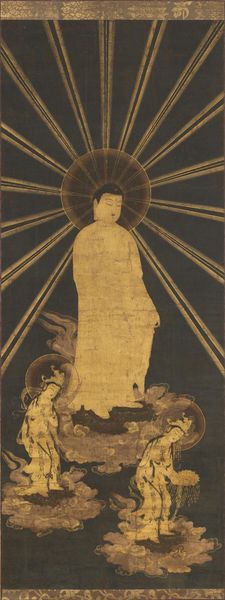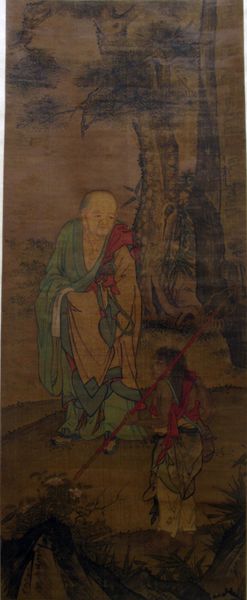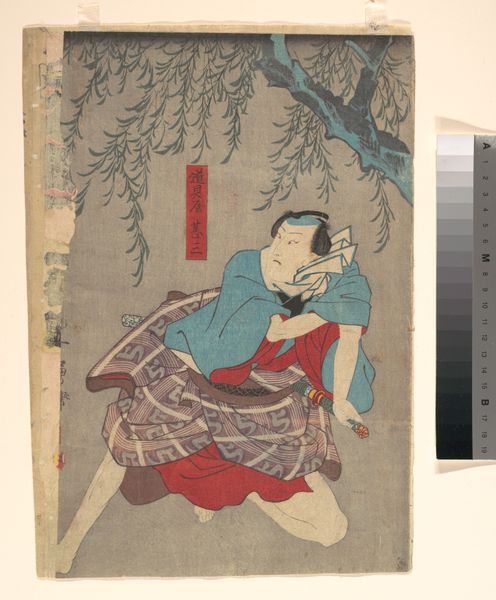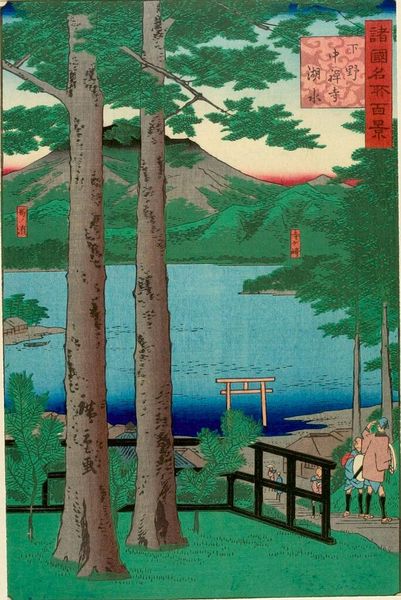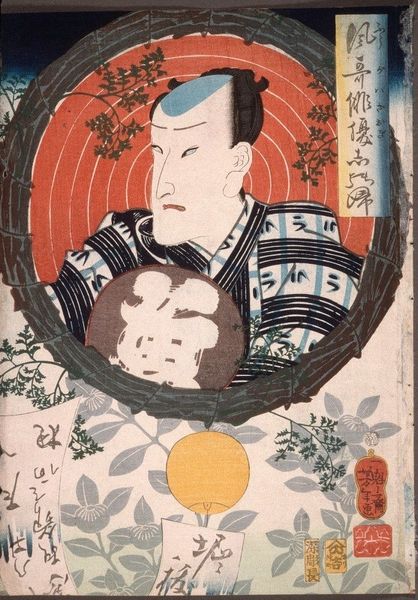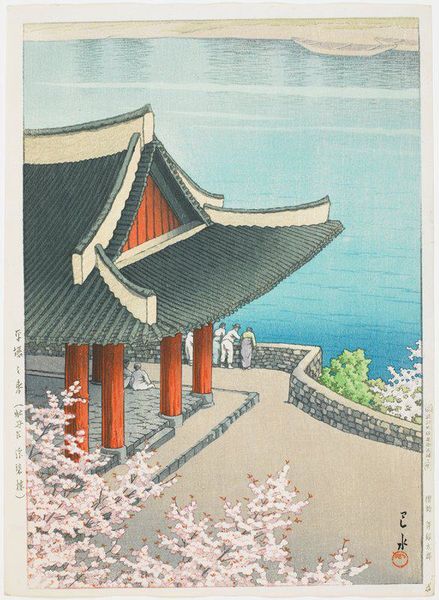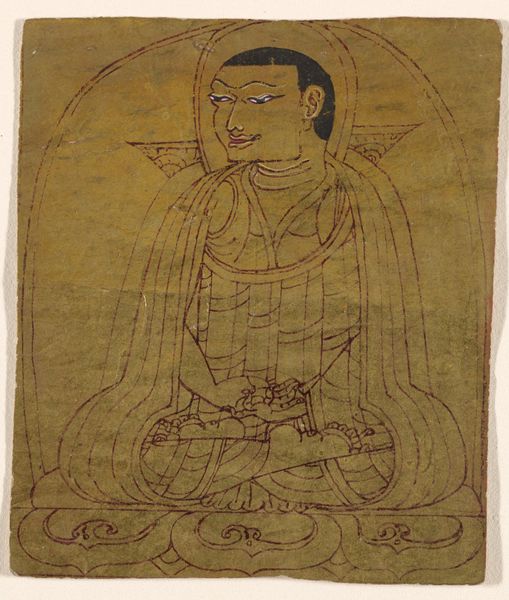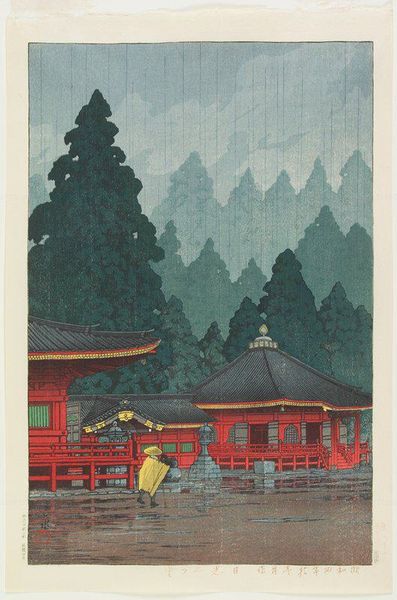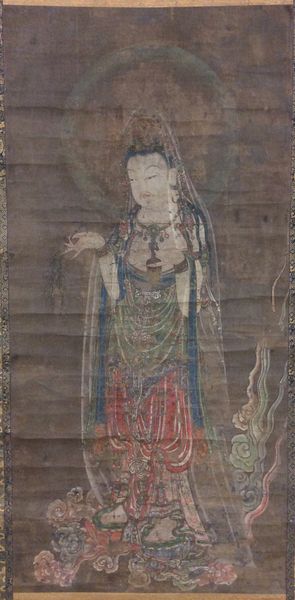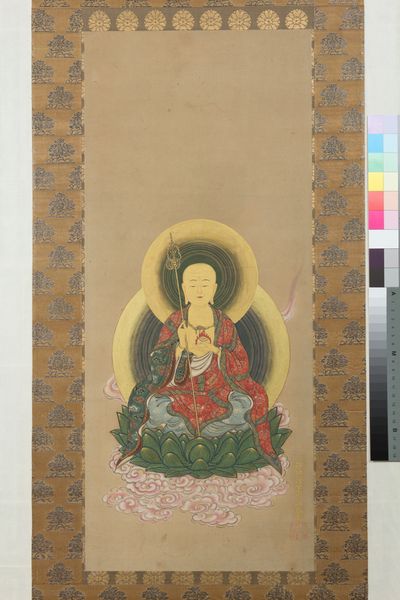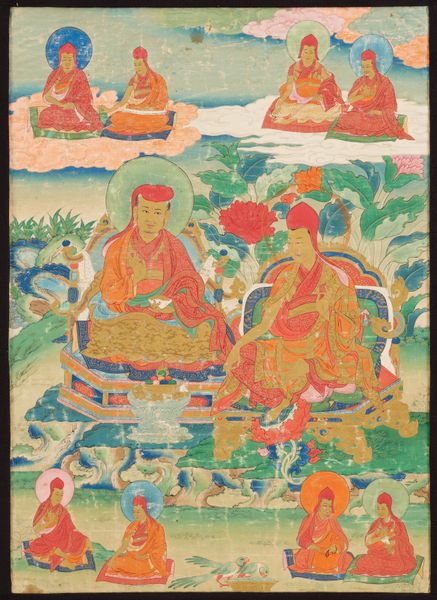
Dimensions: 14 5/16 × 9 7/16 in. (36.35 × 23.97 cm) (image)23 × 19 × 1 1/2 in. (58.42 × 48.26 × 3.81 cm) (outer frame)
Copyright: No Copyright - United States
Curator: Here we see Kawase Hasui's woodblock print, "The Great Buddha at Kamakura," possibly from 1930. It offers a view of a renowned Japanese landmark now installed here at the Minneapolis Institute of Art. Editor: It's incredibly serene. The soft blues and greens create a sense of calm, and the sheer size of the Buddha, even depicted here, feels humbling. I appreciate the birds alighting on its hands too. Curator: Indeed. Kawase was a master of *ukiyo-e*, or "pictures of the floating world," though he's particularly associated with the *shin-hanga* movement, which revitalized traditional woodblock printing. Unlike earlier *ukiyo-e*, *shin-hanga* often focused on landscapes and employed more Western artistic principles like perspective and shading. It was intentionally crafted for foreign audiences seeking images of Japan. Editor: It’s interesting how these prints, intended to portray an "authentic" Japan to the West, actually became a key part of constructing a specific, marketable image of Japanese culture. One that catered to orientalist expectations. Curator: Precisely. Notice how the figures at the base add a sense of scale and human connection to the monument. Hasui often included people in his landscapes to invite the viewer into the scene, but it does add a colonial gaze here, does it not? Editor: Absolutely. They appear small and almost reverent before the immense Buddha. The perspective places us, the viewer, in a position of observation, reinforcing that dynamic of the observed versus the observer that is quite prevalent. But those birds resting on his hands add a note of tenderness and humility. Even the serene greens, those natural motifs, provide solace against the grander social structures being rendered. Curator: The temple structure to the right adds an element of everyday life too. It shows that the site isn’t simply a historical monument, it’s an active religious and social space. Editor: And what kind of message might Kawase be making with it? I find the print’s quietness a powerful act in itself, inviting reflection at a time when such contemplative spaces felt fewer, and farther between. The monument, its representation as more than just a symbol of Eastern spiritualism, feels potent in how it asks us to look and listen. Curator: The ability of the image to promote Japanese cultural heritage to international audiences cannot be discounted in all its complexities. It makes you think about how the image has traveled and how its meaning has shifted over time. Editor: I’ll certainly remember this interplay of serenity, the weight of representation, and its persistent call to engage with historical complexities, and think of the human and non-human lives lived around such images of hope.
Comments
minneapolisinstituteofart almost 2 years ago
⋮
Completed in 1252, the Great Buddha of the Kōtoku-in in Kamakura is a 13.35 meters (43.8 ft) high hollow bronze statue that can also be viewn from the inside.
Join the conversation
Join millions of artists and users on Artera today and experience the ultimate creative platform.

